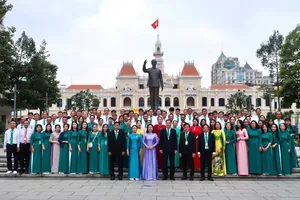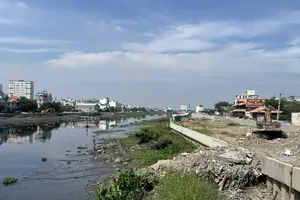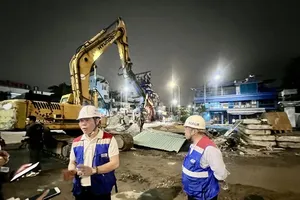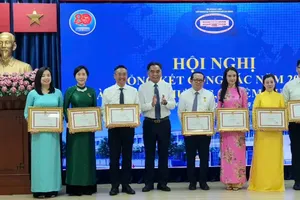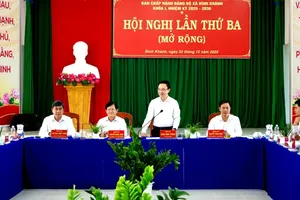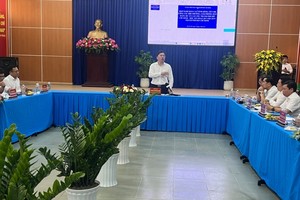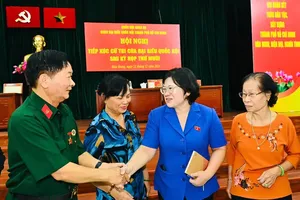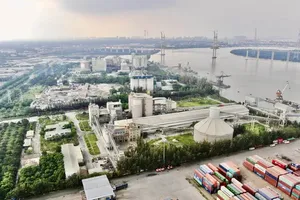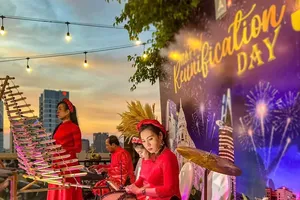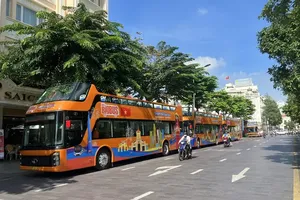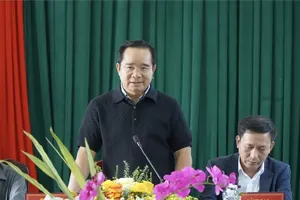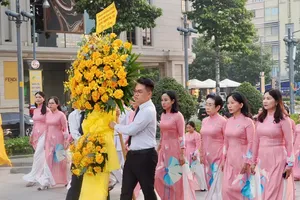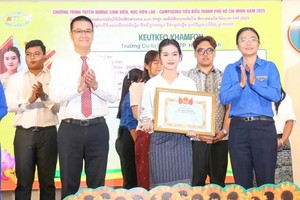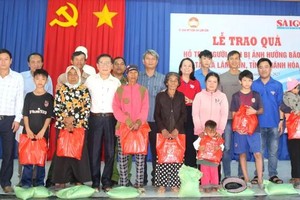
Dr. Huynh Thanh Dien, member of the city’s Support Industry Development Project Consulting Team, estimated that the seven breakthrough programs have been implemented in the phase of studying and building projects, capital mobilization solutions and implementation mechanisms. Specific actions to conduct the programs have been unclear with some being unspecific and abstract.
Ward, commune and district authorities have been vague about actions to materialize the programs.
Missions to carry out the programs has mainly been assigned to government agencies with little attendance by local business community, Mr. Dien commented. Meanwhile the government just plays the role of state management not running the programs, so implementation will be difficult without businesses’ joining hands.
Reports from authorized agencies show that results got since the programs were implemented in 2015 are unconnected, not radical and unsustainable.
Quoting traffic field, deputy chairman of the city People’s Committee Le Van Khoa said that public passenger transport output has grown after many years of reduction. Still he admitted that bus transportation still shows many limitations and faces challenges.
Stating at the 10th conference of the 10th HCMC Party Committee, the committee’s standing deputy secretary Tat Thanh Cang, said that traffic jam and accidents have been complicated. Investment in connecting transport methods together has not been high, airport and seaport overloading especially at Tan Son Nhat International Airport has raised difficulties for socio-economic development, the construction progress of urban railway routes has not met requirements and urban planning and canal house removal projects have been slow.
Resources unclear
Although the city has built plans and solutions to specify the program to ease environmental pollution, the Department of Natural Resources and Environment said that the city’s environmental quality has insignificantly been improved. Groundwater, surface water, wastewater, air and noise pollution has not decreased. Urban waste management has showed many problems. Part of organizations and individuals’ awareness of environmental protection has not been good.
Explaining the slow change in the city's seven breakthrough programs, a representative of the city People’s Committee said that the 10th Party Committee resolution has been implemented in five years from 2015-2020. In fact, the municipal authorities had soon had initial ideas comprising targets, directions, missions and solutions for each program.
Nonetheless, the seven programs were just approved by the city at the end of 2016. The promulgation of the programs together with implementing plans by the city People’s Committee had been slow. However it was a very serious and careful preparation process with opinion collection from many experts, scientists and agencies, the representative said.
The biggest difficulty for the city to conduct the programs now is capital with the total need of US$40 billion. Meantime, the city’s budget contribution rate to the central budget has been increased for national development programs.
HCMC has faced challenges in raising funds from other sources rather than the state budget because it has still mobilized capital under a common mechanism applied nationwide instead of a particular mechanism suiting the city’s characteristics of the country’s economic hub.
Dr. Nguyen Huu Nguyen, from National Strategy and Policy Research Center under HCMC University of Social Sciences and Humanities, proposed the city to make clear three resources to implement the seven breakthrough programs comprising finance, human resources (skilled workers) and brain power (good experts and cadres).
While performing their missions, a number of city cadres and officials are still selfish, self-seeking, greedy for frame, corruptive, factional, partial and bureaucratic. This is an obstacle in carrying out the seven breakthrough programs, he added.
The City's seven breakthrough programs comprise urban planning and development; human resource quality , administrative reform, growth quality and economics’ competitiveness improvement; and traffic jam and accident, flooding, environmental pollution reduction.

